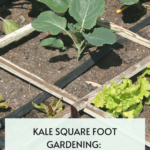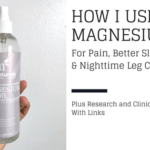
Growing up, I was schooled by the matriarchs in our family to know the difference between the “good” laundry detergent and the “cheap stuff”. The good stuff (namely Tide) was more expensive but worth it due to it’s cleaning ability. I was taught to look for the excessive lather because that was an indicator of it’s cleaning power. So, naturally that’s what I based my purchasing decisions on for the better part of my life. I confess that in my heavy duty couponing days, (yes, I was an extreme couponer like the show), I thought I was “rich” when I had more Tide than I could ever imagine only paying a fourth of the retail amount.
However, as I started my transition to a more natural lifestyle, my eyes were opened about the potential irritants and toxins in the detergent that I grew up using. As pointed out by many other healthy living advocates, some of the biggest manufacturers are not required to disclose the ingredients of their products. Having ingredients on a product allows for consumers to do their own research on it’s potential health risks.
What made me start investigating my detergent in the first place?
Well, in my blog post 5 Natural And Inexpensive Things I Did To Get My Period Back, I told the story of how I started to see lots of hormonal changes over the last couple of years. I asked my doctor about the changes and was not offered much insight or direction. I decided to do my own research and implemented a couple of natural solutions which resulted in almost all of my symptoms going away.
During my research, I found out that many of the products we use everyday have the potential to cause hormonal and other reactions in our body. As mentioned in this U.S. News article titled Hormone-Disrupting Chemicals Found in Many Household Products: Study, many commercial laundry detergents have been found to have chemicals which act like keys, fitting into receptors in our body, unlocking a variety of responses that are normally reserved for our body’s own hormones to initiate. These estrogen mimicking chemicals can have detrimental effects even breast cancer.
So, it was because of this and my journey to eliminate potential excess estrogen mimicking chemicals for myself and my family, that I made the switch to natural detergents.
BUT, I quickly realized how expensive many of the natural detergents were (well, aside from the brand Molly’s Suds which is actually a great affordable choice which you can find HERE), I decided to figure out how to make it on my own.
CLICK BELOW TO CHECK OUT MY DIY MATCHA FACE SCRUB
Not to toot my own horn, but my family and I have experienced so many benefits from the switch. Not only do we have piece of mind that we are not receiving toxins with each wash, but the small eczema-like patches of dry skin a couple of us started to experience over the last couple of years have completely cleared up. And while skeptics may think it could have been our change in diet, or new clothes, or environment, my switch to this natural detergent is the ONLY change that it can be attributed to.
After many hours on Pinterest, I narrowed it down to a 4 ingredient recipe. And yes, OUR CLOTHES GET CLEAN!
The 4 ingredients that I use for this detergent are baking soda, washing soda, castile soap, and essential oils.

What Is Washing Soda?
That’s exactly what I asked when I started down this journey. Everyone has heard of baking soda, but I truly never came across washing soda before this. But to explain, I have to get a little scientific.
If you look on the label of baking soda for it’s scientific name, you will see that it is sodium bicarbonate. According to this article on the Boston.com Ask Dr, Knowledge section titled What’s the difference between baking soda and washing soda?, it is explained that “Baking soda, or sodium bicarbonate (and sometimes called sodium hydrogen carbonate) has one of the sodium atoms replaced by a hydrogen atom.”
Washing soda by it’s scientific name is sodium carbonate, denoting that is missing the atoms that baking soda has. In simpler terms, if you took baking soda and put it in a pot and stirred it up for 20 minutes, you would end up with washing soda. During that time, you would notice how the powder may bubble up almost like it has water in it and later falls flat because the extra atoms have been removed. While there are people that do this to obtain washing soda instead of buying it, I do not recommend it for safety reasons (always do your own research).
While they seem like they are interchangeable, they are very different. Baking soda can be used in many cleaning, beauty, and edible products while washing soda cannot. While it is deemed non-toxic for it’s intended uses as a natural cleanser by the Environmental Working Group (it actually received an A on their scale which is reserved for the products with the lowest health risks), it is NOT intended for consumption. Click HERE to find out more about the research by the Environmental Working Group.
I prefer to use Bob’s Red Mill baking soda because of the care the company takes in ensuring their products are the purest possible, but any baking soda can surely be used. As far as the castile soap I usually use Dr. Bronner’s Bar Soap but Kirk’s Castile Soap is also great and all natural (and is usually cheaper).
Lastly, you may or may not need/want to use a food processor in this process. While you can easily grate the bar of soap by hand (which I did for a long time when I started making this soap), I found it easier to use a food processor to help mix the ingredients. Not only does it give my hand a break, it allows the castile soap to get chopped down to very fine pieces, much smaller than you are able to do by hand. The end result can dissolve easily when added to the washing machine drum. However, you may want to dedicate a specific inexpensive food processor to making detergent.
But don’t get me wrong, this can totally be done without a food processor by grating the bar of soap on the fine side of the grater. If you find the detergent not dissolving as easily as you would like when you add it to the water, add it to the machine while running the hot water for about a minute then switch the water to a cooler setting. I find this detergent to work best in warmer washes.
OH, and one last thing (finger’s crossed). This and many other natural detergents will NOT HAVE LOTS OF SUDS! I repeat, this is a LOW SUDS detergent.
We have become accustomed to thinking that a sudsy soap is an indicator of it’s cleaning power. However, the suds are actually additives to the detergent. Sodium Lauryl Sulfate is one of the most recognized chemicals in soaps being a surfactant and foaming agent. Because manufacturers know people associate foam with product strength and ability, they often add it to products (click HERE to read more about SLS). However, SLS has been shown to be a skin irritant. Thus, many natural based products made without it are LOW SUDS products.
Ok, let’s get started on the recipe.

NATURAL DIY LAUNDRY DETERGENT
For this detergent you will need:
2 Cups of Baking Soda (I normally buy Bob’s Red Mill Baking Soda from here)
2 Cups of Washing Soda (this is the one I use)
1 Bar of Castile soap (I normally buy Dr. Bronner’s Bar Soap or Kirk’s Castile Soap from here)
15-20 drops of favorite essential oil (optional)
Optional (10 drops lemon essential oil for degreaser)
There are two ways that you can tackle this first step of prepping the castile soap.
1. The Castile Soap:
Option A: Cut the bar of soap into small chunks. Then place it into a food processor and pulse with the rest of the dry ingredients that follow.
Option B: Grate the entire bar of soap as fine as possible. Identify which side of the grater will produce the smallest grate possible and place it into a large bowl.
2. Mix the grated bar soap, washing soda, and baking soda in a bowl. Use a spoon to mix the ingredients.
3. Add 15-20 drops (or more) of your favorite essential oil to the mix. Add 10-15 drops of lemon essential oil as a degreaser. (This step is completely optional)

4. Mix the ingredients either with a spoon or with a food processor. If mixing by hand, it will be done when the oil can no longer be seen as beads in the mix. If you used a food processor, the mixture is done when all of the grains are relatively the same size and looks like conventional powder detergent. (view picture above)
To Use:
- Add 1 1/2 to 2 tablespoons to warm to hot water at the beginning of the wash cycle for a regular sized load and up to 3 tablespoons for a large load. Let the detergent dissolve a bit and turn the water to a cooler temperature after a minute or so if desired.
- If you grated the castile soap, the soap flakes may not dissolve right away. If this bothers you, add the detergent to a cup of hot water and dissolve before adding it into the washing machine.
This amount yields about 25-30 loads and costs a fraction of the price of natural detergents. The initial investment can vary anywhere from $7-20 depending on the brands you purchase. The washing soda box yields about 3 batches per box and the essential oils can be used for a ton of things aside from this recipe.
I hope you found this recipe helpful and easy (and fun) to try. Personally, I love finding ways of taking my family’s health into my own hands. So, making this batch every now and then is an adventure rather than a bother. Let me know if you’ve tried any other natural detergent in the comment section below.
If you’ve found this or any other post on my blog helpful, feel free to tell a friend by hitting the social media share buttons below.
FTC DISCLOSURE: Some of the links in this post are affiliate links. If you click on them and make a purchase, I will receive a small finder’s fee on the sale. This does not increase your price in any way shape or form. Using these links help support the continuation of this website. All opinions are my own. Thank you in advance.
CLICK BELOW TO CHECK OUT MY NATURAL ANXIETY SOLUTIONS










